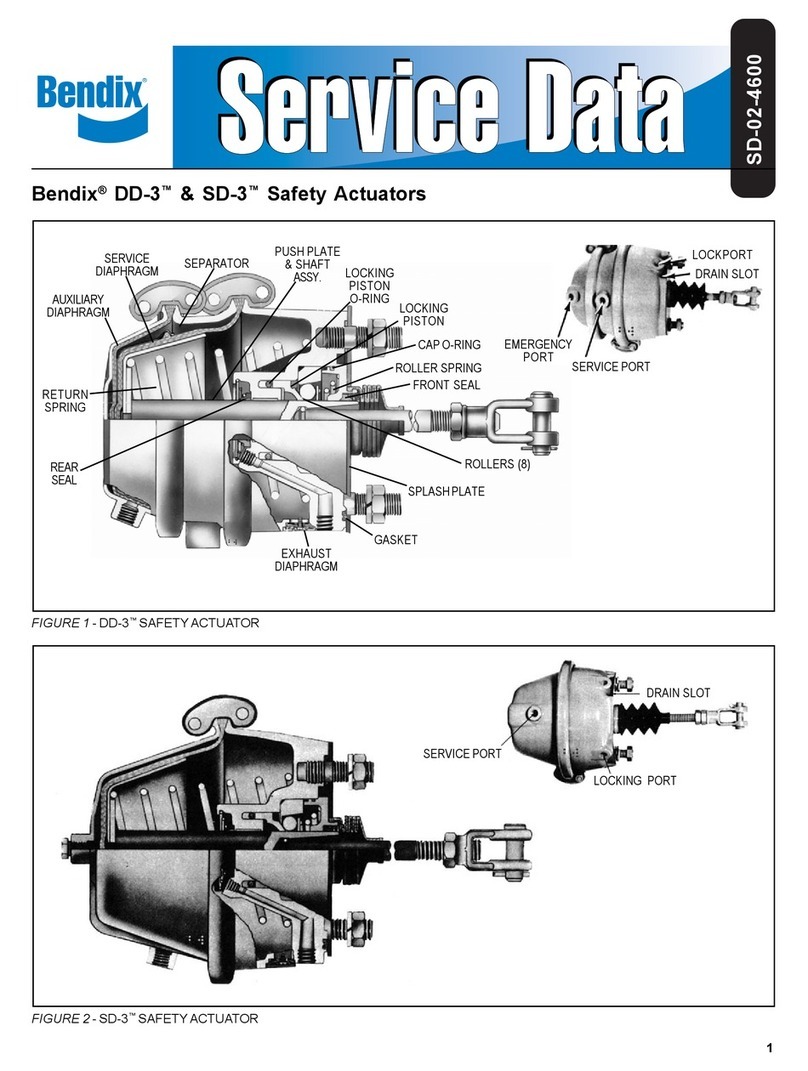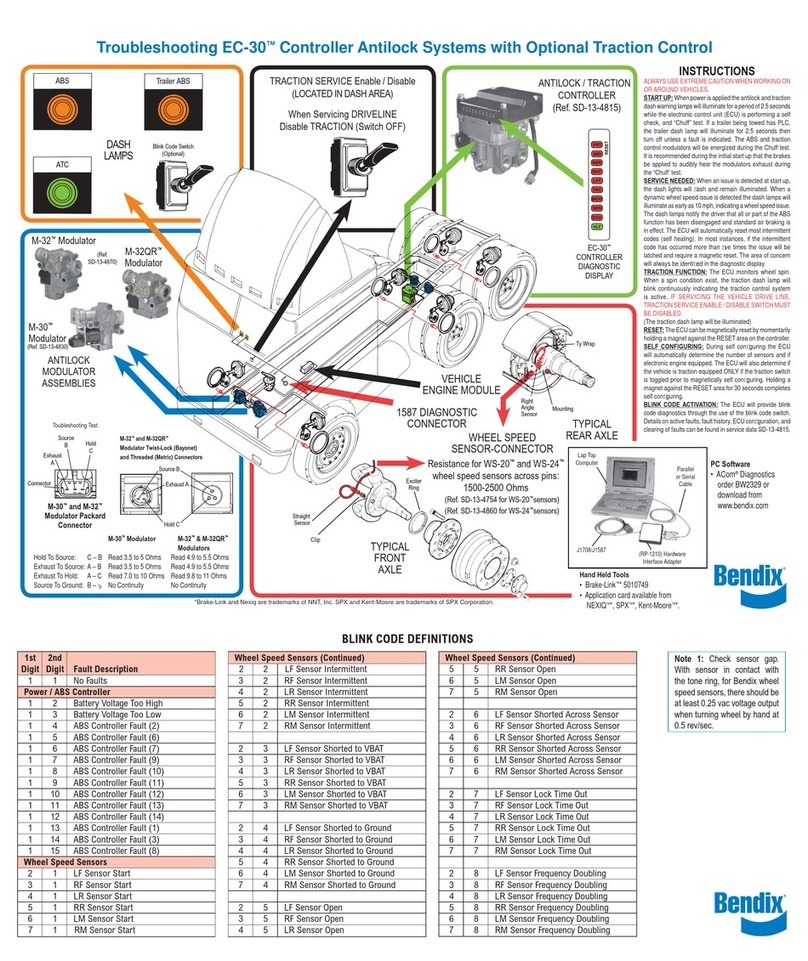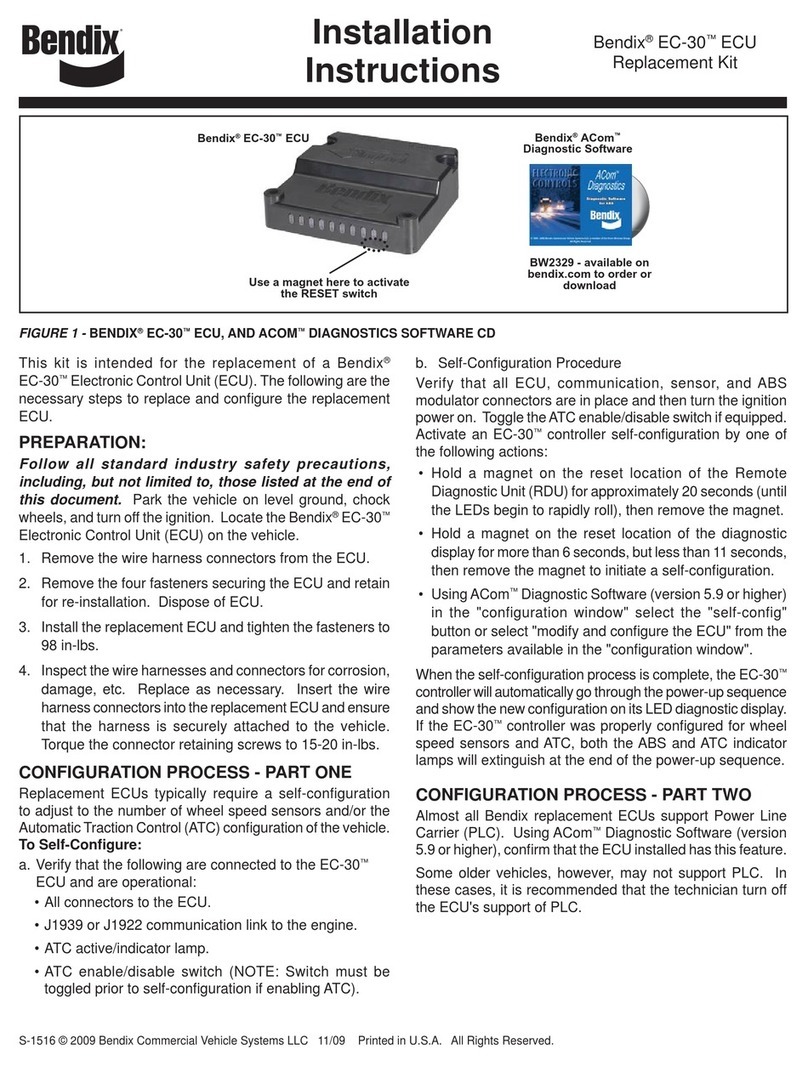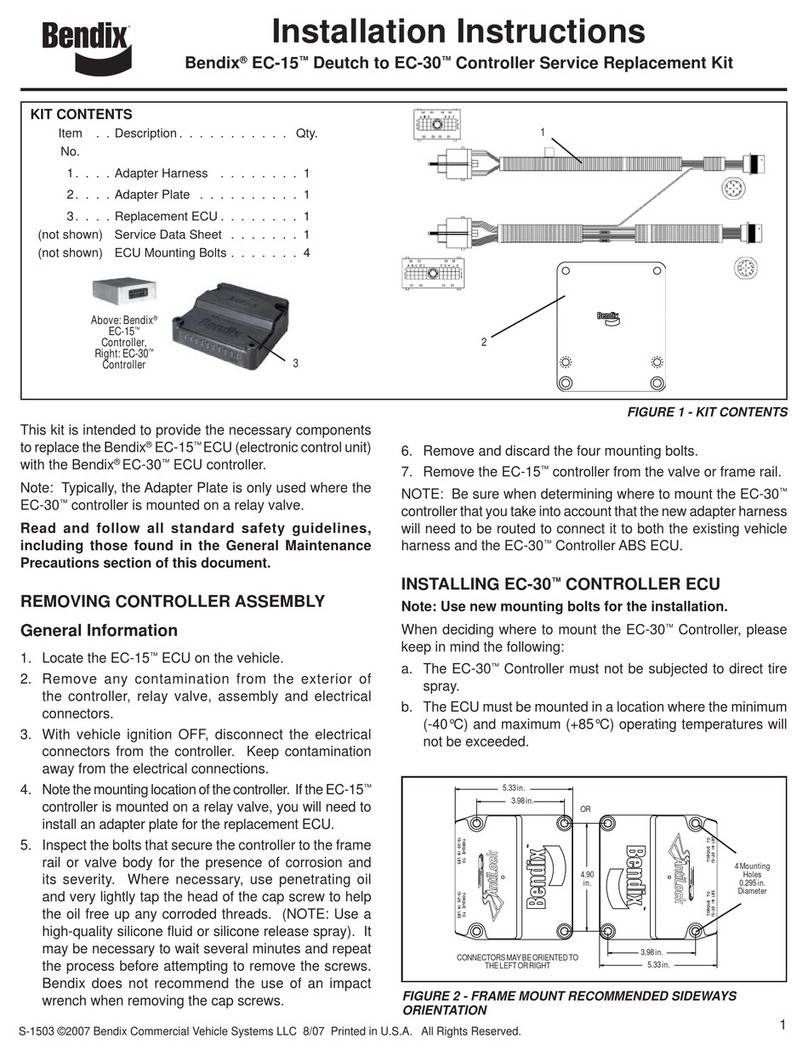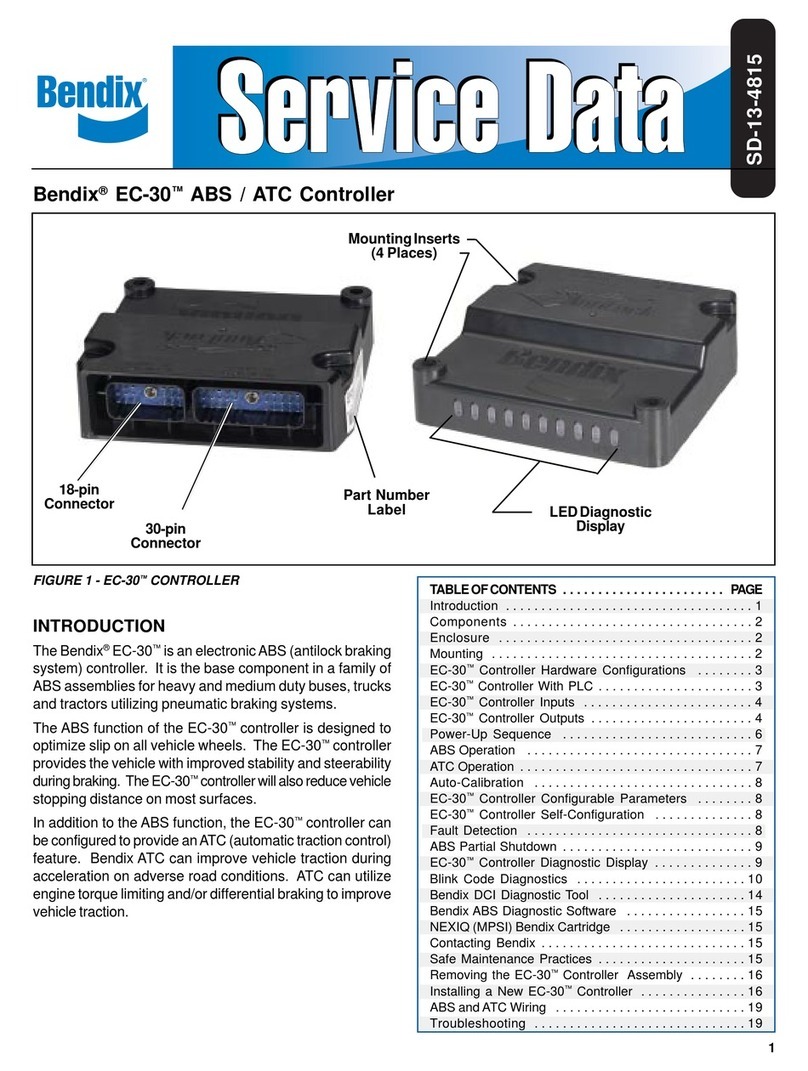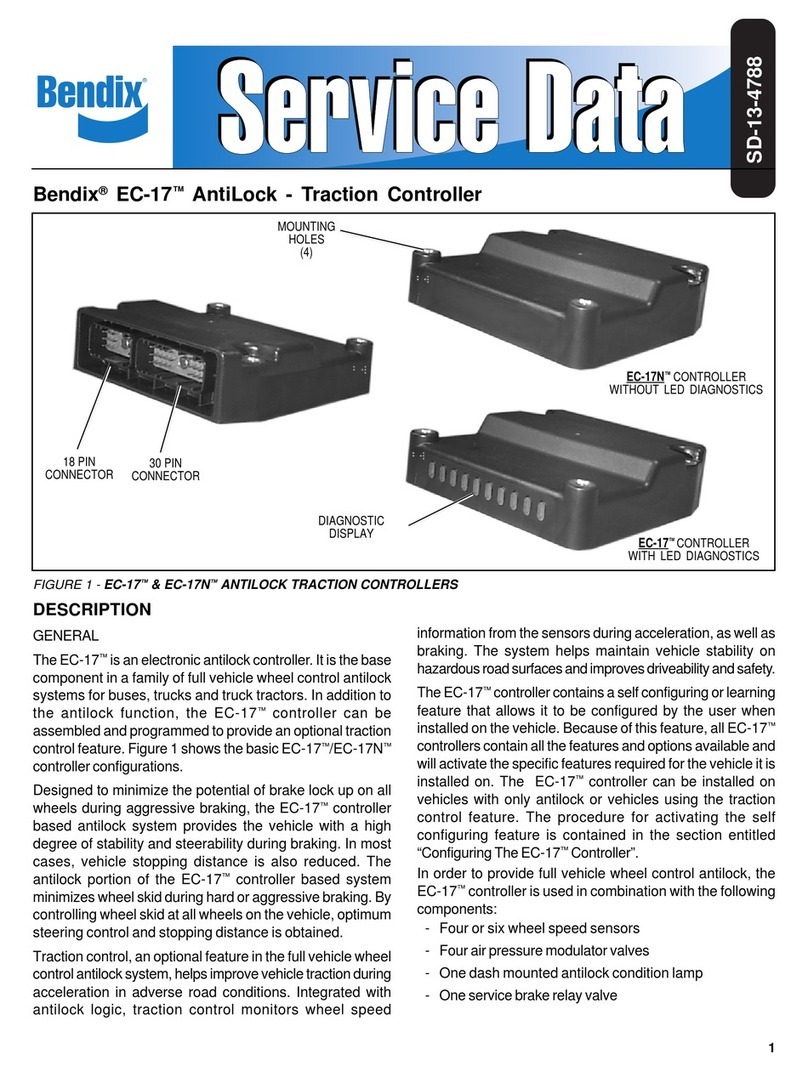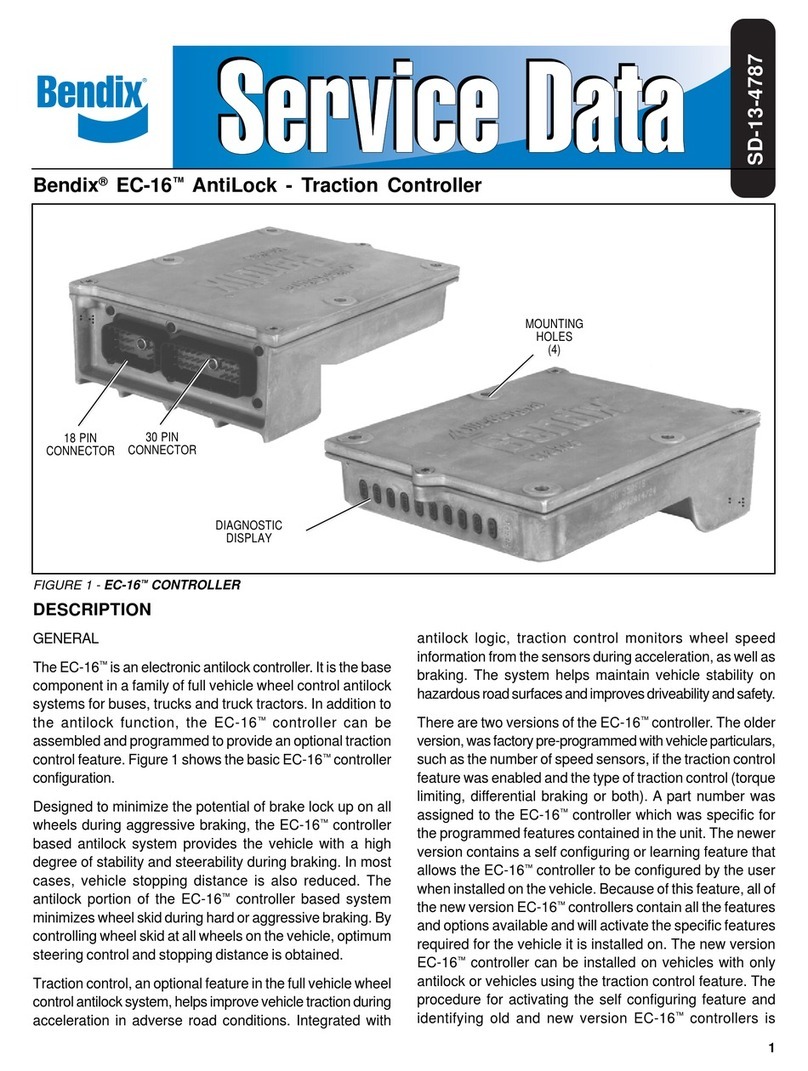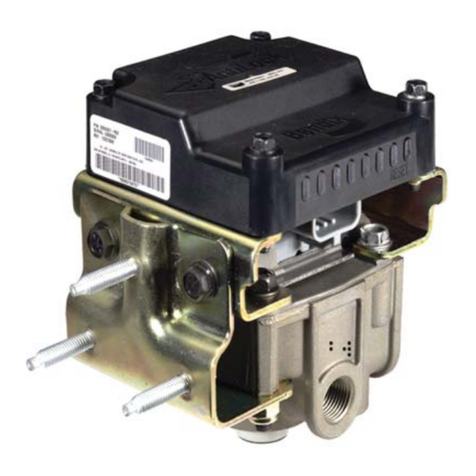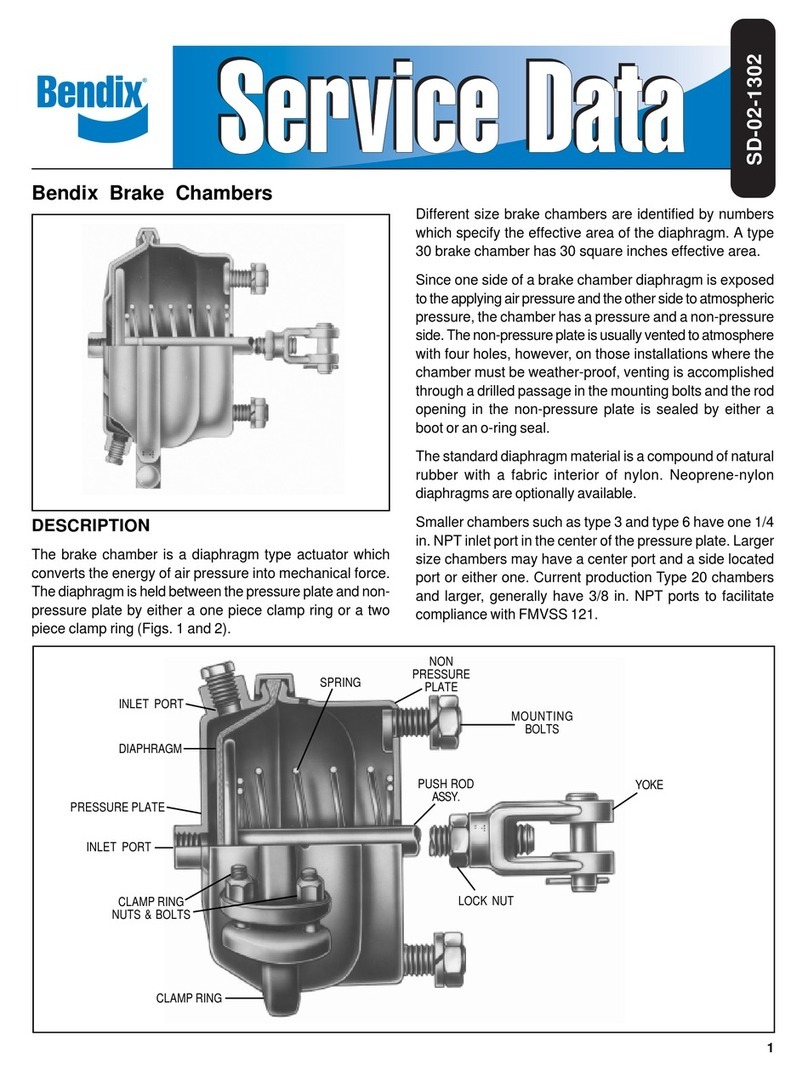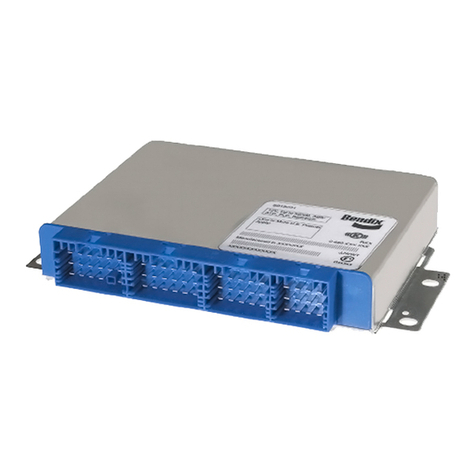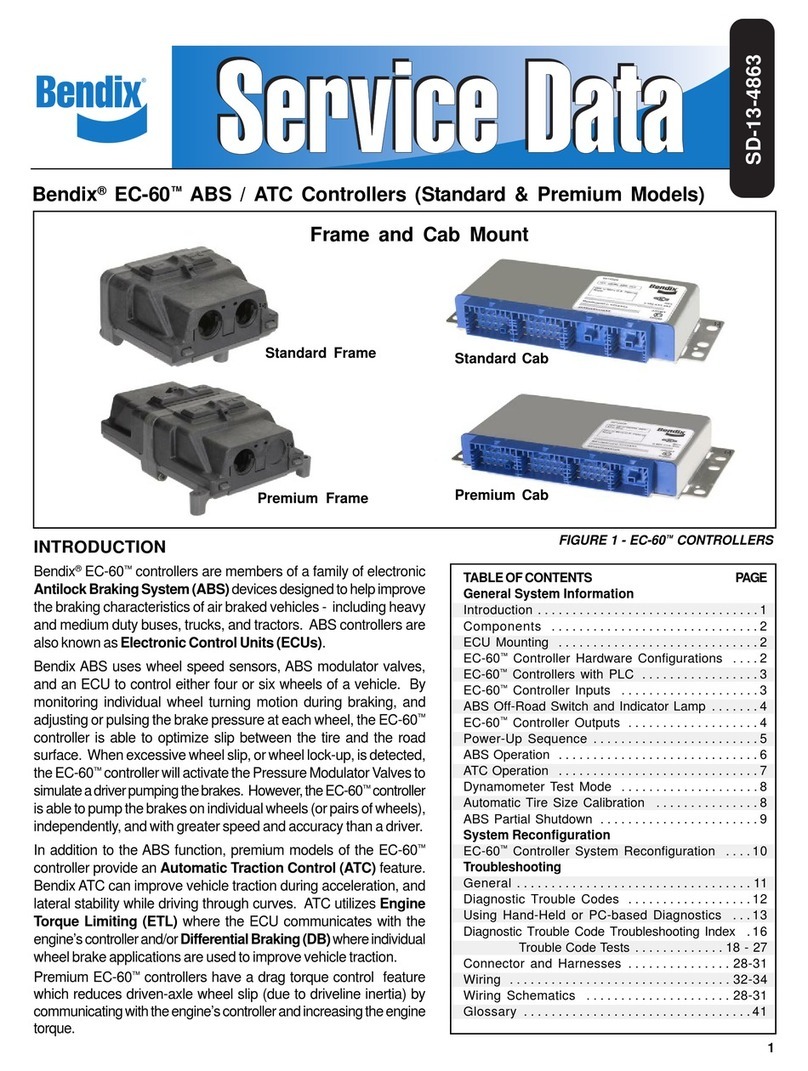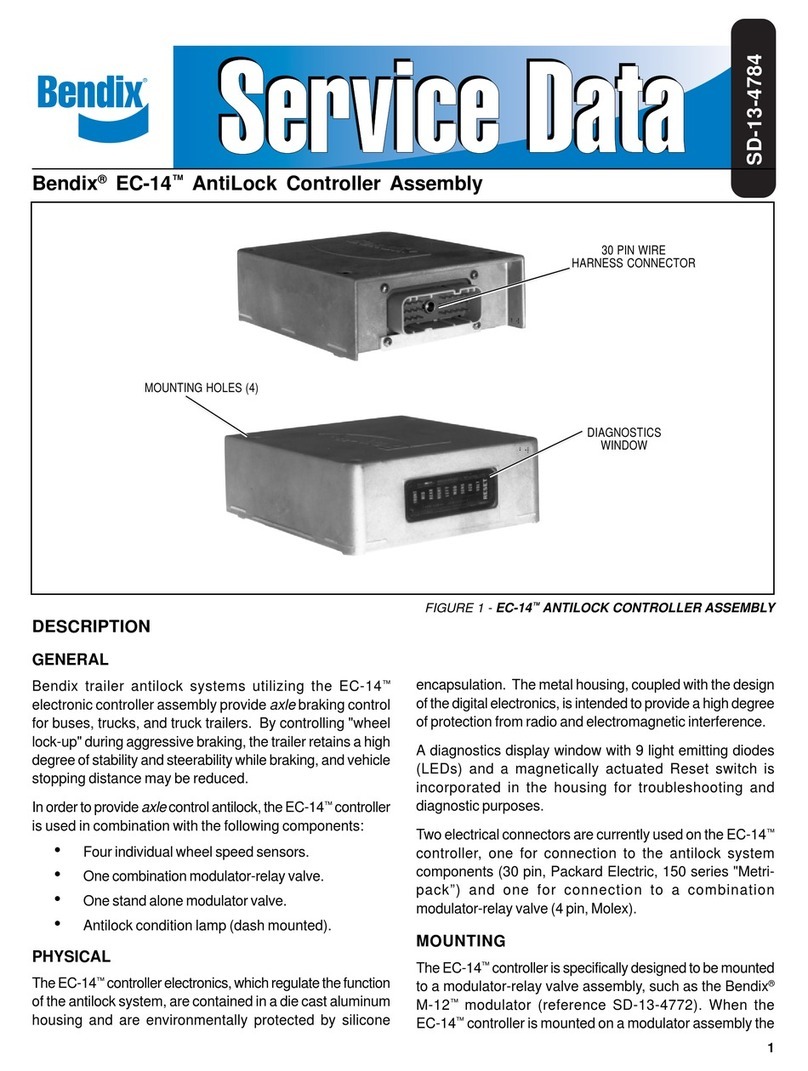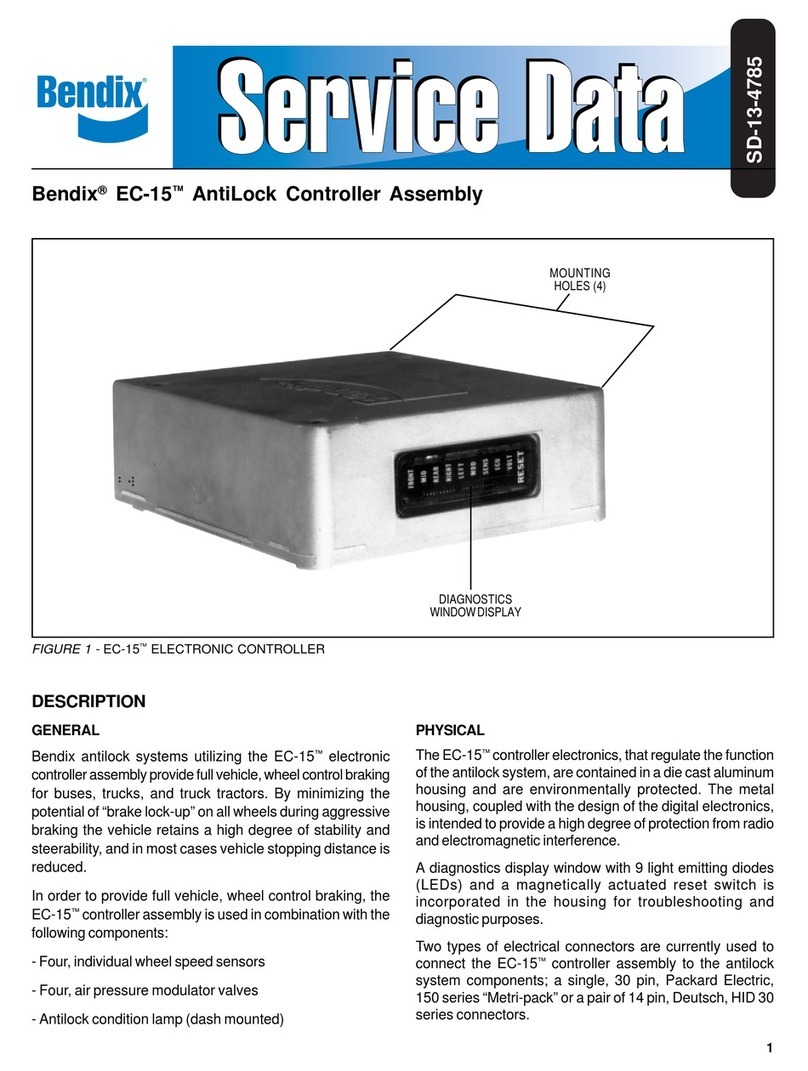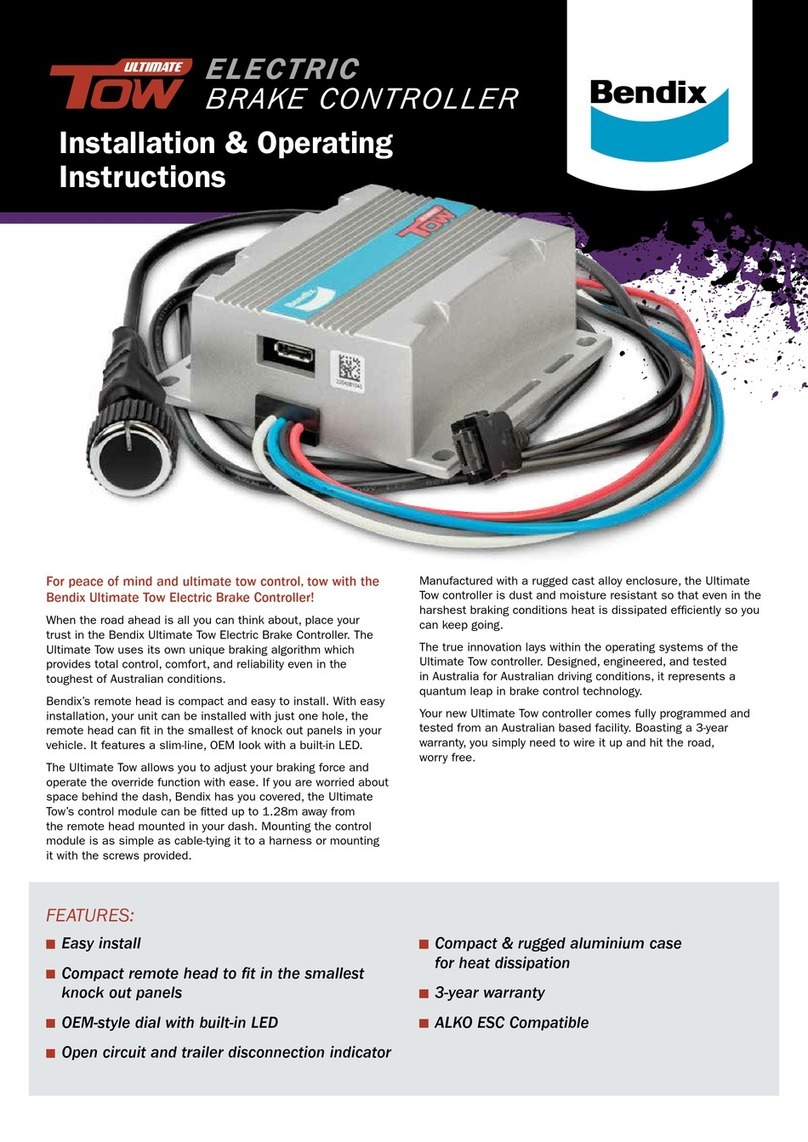
4
Solenoid valves contained in the modulator are energized
and de-energized by the EC-13™controller in order to
modify the brake application. When a solenoid coil is
energized its shuttle moves, and depending upon the
function of the specific solenoid, it either opens or closes,
thereby causing the exhaust or re-application of air
pressure to the relay valve portion of the modulator and to
thebrake actuators connected. Thesolenoidsin either the
M-12™or M-12R™modulator are controlled independently
by the EC-13™controller. By opening and closing the
solenoid valves in the appropriate modulator, the EC-13™
controller is actually simulating what the driver does when
he “pumps” the brakes.
It must be remembered however that unlike the driver, the
EC-13™controller is able to “pump” brakes on either the
front or rear axle(s), or both, independently and with far
greater speed and accuracy.
ANTILOCK SYSTEM OPERATION -
COMPONENT PROBLEM
The Bendix®EC-13™controller handles equipment
problems using a conservative fail-safe philosophy. Any
singleelectricalprobleminacomponentdevotedtoantilock
braking,results in simultaneousillumination of theantilock
condition lamp and a troubleshooting LED on the EC-13™
controller. Depending upon the type of problem and its
position of occurrence the EC-13™controller can continue
antilockfunctionat a lowerperformancelevel, disable all of
the antilock on the trailer or only a portion. When antilock
is disabled, the brakes on the affected axle(s) revert to
standard air braking.
System Parts Still Operating ( Yes / No )
Problem ABS Lead ABS Rear
Location Axle Axle
LeadAxle Rt. Sensor Yes Yes
LeadAxle Lft. Sensor Yes Yes
RearAxle Rt. Sensor Yes Yes
RearAxle Lft. Sensor Yes Yes
LeadAxle Modulator No Yes
RearAxle Modulator Yes No
Controller No No
Voltage * No No
* If electrical power is below or above the 7 to 18 volt operating
range the ABS will stop operating. If voltage returns to the 8-17
volt range the ABS is restored.
A problem in a single speed sensor will not result in
disablingofthe antilock system. Ifa speedsensor problem
is detected by the EC-13™controller, the remaining speed
sensor on the axle will be used to continue antilock
operation on the axle but at a slightly degraded level of
performance.
Withthefailedcomponentapproachdescribed, the antilock
system will attempt to provide the trailer with the best
possible braking and stability even after a problem has
occurred. It should be remembered that the driver will be
advisedof any degraded antilock operation via thecondition
lamp and that standard air braking will still be available on
those brakes where the antilock has been disabled.
ANTILOCK WIRING
GENERAL NOTES
The wires that carry information and power into and out of
theEC-13™controlleraregroupedandterminateat a 30 pin
Packardconnector which plugsinto the EC-13™controller.
The wiring harnesses and connectors are weather proof
and the wires that enter the connector are sealed to the
connector. The wire gauge used in the wire harnesses is
specific to the task performed.
When diagnosing wiring in the antilock system the following
general rules apply and should be followed where applicable:
1. Itis generally advisable to replacea wire harnessrather
than repair individual wires in the harness. If a splice
repair must be made, it is important that the splice be
properlysoldered with arosin flux (notacid based) and
the splice made water proof.
2. Do not pierce wire insulation when checking for
continuity. Check for power, ground or continuity by
disconnecting the connector and testing the individual
pins or sockets in the connector(s). Do not overstress
sockets.
3. Always check the vehicle hand book for wire and
connector identification. Individual wire identification
will differ depending upon the type of connectors in
use, the trailer manufacturer, and the system features
in use.
4. While the serial link connections (2 total) are present
on all EC-13™controllers they are not always used. In
addition several connector openings are not used.
PREVENTATIVE MAINTENANCE
Every 3 months; 25,000 miles; or 900 operating hours:
1. Check all wiring and connectors to ensure they are
secure and free from visible damage.
2. Although the EC-13™controller incorporates a self
checkdiagnostics,theLEDdisplayshouldbe inspected
to ensure that they are functional. With the tractor
ignition on and a brake application held applied, hold
a magnet (800 gauss; capable of picking up 3 ounces)
on the diagnostic window reset switch and note all of
the LEDs illuminate. If one or more of the LEDs DO
NOT ILLUMINATE and the antilock condition lamp on
the trailer indicates the system is functioning properly,
the non-illuminated LED(s) should be noted for future
reference. Although the diagnostic capabilities will
be limited, the system will continue to function as
designed.
